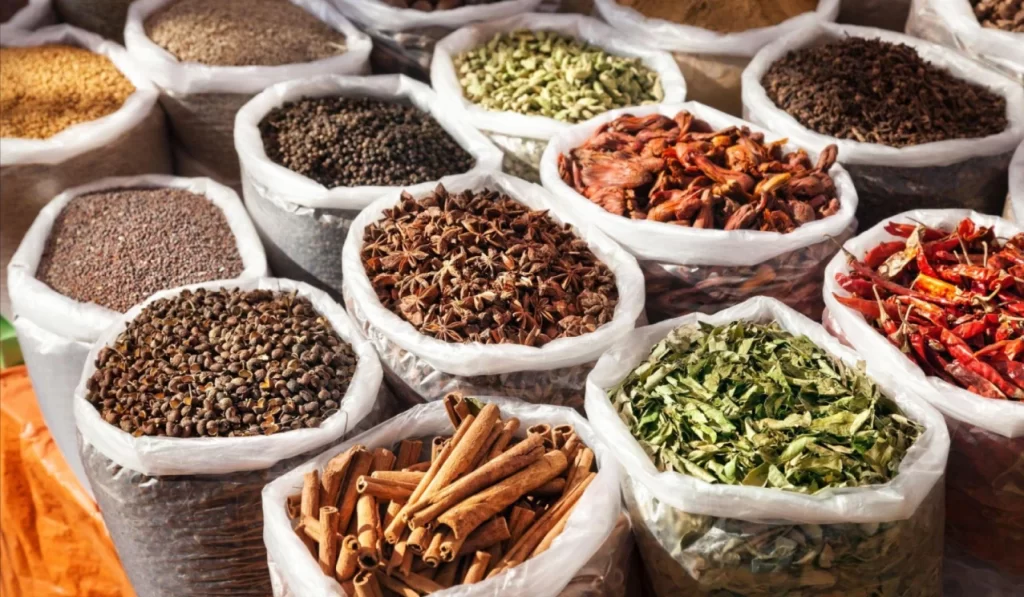To achieve Spices Board of India’s export target of $10 billion by 2030, the country’s share in value-added spices should rise up to 70%.
- India’s share in the global seasoning market, pegged at $14 billion in 2024, is only a paltry 0.7%, against China’s 12% and U.S.’s 11%

India’s Status in Spices
- Production: India is the world’s largest spice producer. It is also the largest consumer.
- India produces 75 of 109 varieties listed by International Organization for Standardization.
- Major Spices-producing States: Madhya Pradesh, Rajasthan, Gujarat, Andhra Pradesh, Telangana, Karnataka, Maharashtra etc.
- Export: India is largest exporter of spices. Chilli was the most exported spice from India (2021-22).
- Major Export Destinations: China, USA, Bangladesh, Thailand, UAE, Sri Lanka, Malaysia, UK etc.
Key challenges
- Low Value Addition: only 48% of India’s spice exports are value-added products, while the rest are sold as raw whole spices.
- Socio-economic Challenges: 98% of spice production is done by small-scale farmers with landholdings of less than 2 hectares.
- Weak Regulation: India lacks a national standard covering all Sanitary & Phytosanitary (SPS) measures.
- Stiff Global Competition: from Vietnam, Indonesia, Brazil, China etc.
Several challenges hinder India's spice industry
Fragmented Production: Approximately 98% of spice production comes from small-scale farmers with landholdings of less than 2 hectares.
Regulatory Gaps: The absence of a comprehensive national standard encompassing all Sanitary and Phytosanitary (SPS) measures affects quality assurance.
International Competition: Countries like Vietnam, Indonesia, Brazil, and China present stiff competition in the global spice market.
To address these issues and bolster the spice sector, the Spices Board of India, a statutory body under the Department of Commerce, has initiated several measures:
Export Development and Promotion: Supporting exporters in adopting advanced processing technologies to enhance product quality.
Infrastructure Development: Establishing and maintaining infrastructure to support the spice industry’s growth and global competitiveness.
By focusing on these strategies, India aims to strengthen its position in the global spice market and achieve the $10 billion export target by 2030.